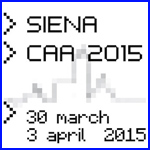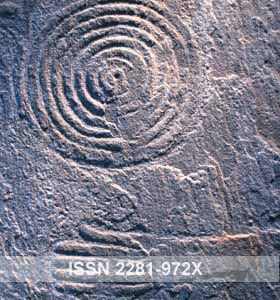[CAA 2015 – session 3C abstract]
Archaeoacoustics has made a breakthrough in the field of rock art research, as it represents a completely new way of studying the landscapes in which rock art was made…
by Margarita DIAZ-ANDREU, Tommaso MATTIOLI
 43rd International Conference on Computer Applications
43rd International Conference on Computer Applications
and Quantitative Methods in Archaeology (CAA 2015)
Session 3C: Computer and rock art studies:
data collection, interpretation and communication
[March 31 2015, Siena] – abstract
Archaeoacoustics of rock art:
quantitative and qualitative approaches
to the acoustics and soundscapes of rock art
in the Western Mediterranean
Archaeoacoustics has made a breakthrough in the field of rock art research, as it represents a completely new way of studying the landscapes in which rock art was made.
It looks beyond the materiality of the past and tries to retrieve, quantify and qualify other less evident or intangible cultural signs, such as those related to soundscapes and the acoustic experiences sought by prehistoric communities.
Several articles have shown the relevance of acoustics as a factor for the production, location and active use of rock art sites and landscapes in Europe. However, there is a variety of alternative methods of research, some related to specific issues (physical, physiological, cognitive, cultural, etc.) and others to specific acoustic effects. This paper will present a basic framework for the investigation and recording of acoustic phenomena by incorporating both quantitative and qualitative aspects and measurements and characterization of spaces, aiming to establish a useful link between theory and practice.
Examples will be drawn not only from Spain, but also from Italy, where new research is currently being undertaken.
Margarita DIAZ-ANDREU, Tommaso MATTIOLI















Leave a Reply